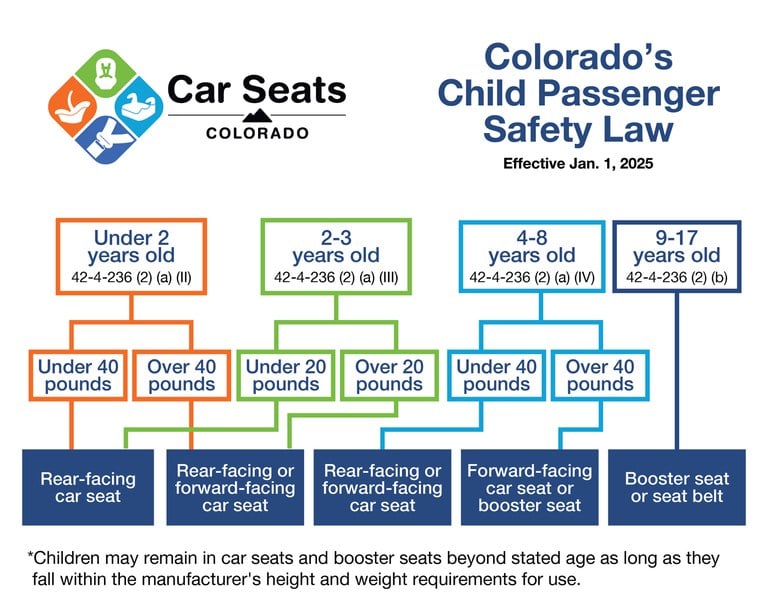Colorado Child Passenger Safety Law
Parents and caregivers are responsible for properly restraining a child and will be ticketed if they fail to do so.
- All safety seats should be installed and fitted according to the manufacturer’s instructions and the vehicle owner's manual
- Caregivers can be pulled over if their child is not properly restrained
- Caregivers can face additional charges if the law is not followed and the child is injured
Updates to Colorado Child Passenger Safety Laws
In June 2024, Gov. Jared Polis signed HB24-1055, a new bill that updates Colorado’s child passenger safety law. These updates reflect the latest research-based recommendations on car seat, booster seat and seat belt use for children. The updates, which become effective Jan. 1, 2025, will ensure that laws keep pace with evolving best practices for car seat and booster seat use. If you have any questions on the updates to the law, please email [email protected].
Fact sheets about updates to Colorado Child Passenger Safety Law in 15 different languages are available on the Multilingual Guides and Resources page. Download Colorado's Child Passenger Safety Law Card for more information.
Child passenger safety laws are a primary violation. Caregivers and drivers are responsible for properly restraining the child and will be ticketed if they fail to do so. Child restraints must be properly adjusted and installed according to car seat and vehicle manufacturer’s instructions. Children must meet the height, weight, and age requirements for the child restraint being used. Child restraints must meet Federal Motor Vehicle Safety Standards.


- Must be in the back seat if one is available.
- If they weigh less than 40 pounds, they must be properly restrained in a rear-facing car seat.
- If they weigh more than 40 pounds, they must be properly restrained in a rear-facing or forward-facing car seat.
- Must be in the back seat if one is available.
- If they weigh less than 20 pounds, they must be properly restrained in a rear-facing car seat.
- If they weigh more than 20 pounds, they must be properly restrained in a rear-facing or forward-facing car seat.
- Must be in the back seat if one is available.
- If they weigh less than 40 pounds, they must be properly restrained in a rear-facing or forward-facing car seat.
- If they weigh more than 40 pounds, they must be properly restrained in a forward-facing car seat or a booster seat.
- Must be properly restrained in a booster seat or seat belt.
- The shoulder belt must cross the shoulder and chest (not the neck or face), and the lap belt lies flat across the upper thighs (not on the stomach).
